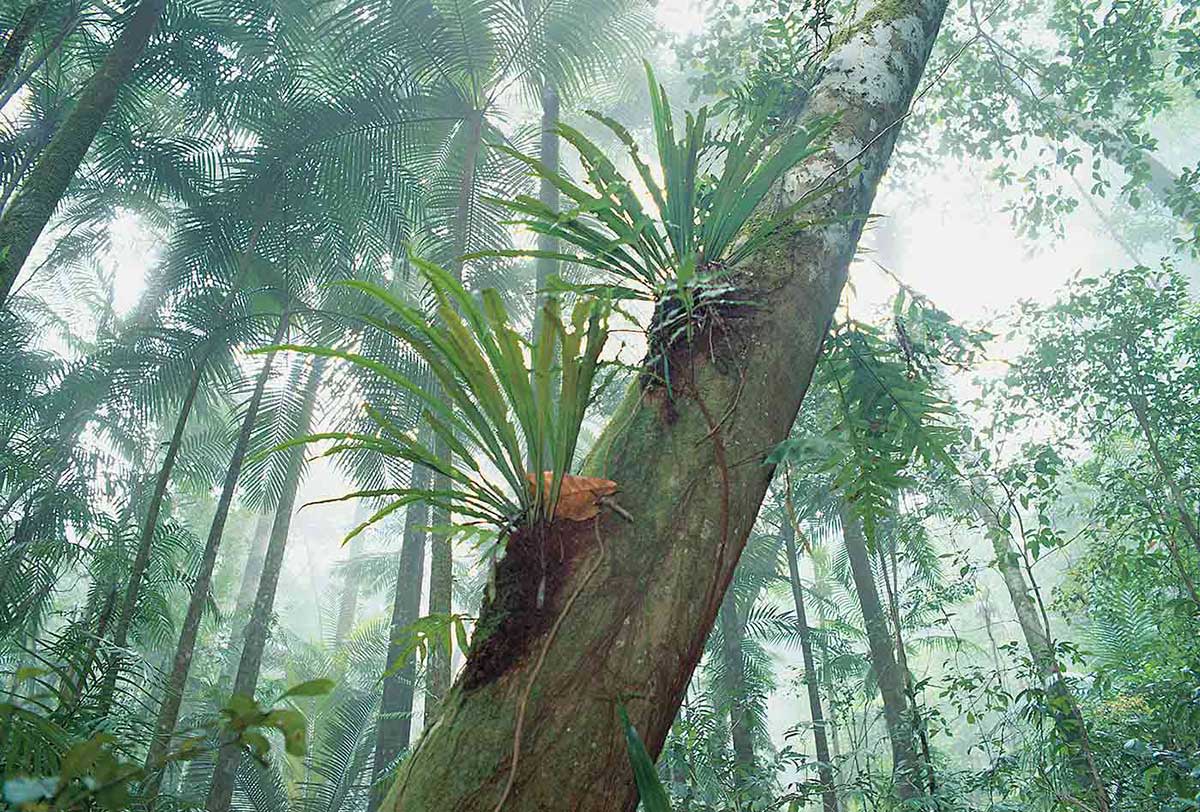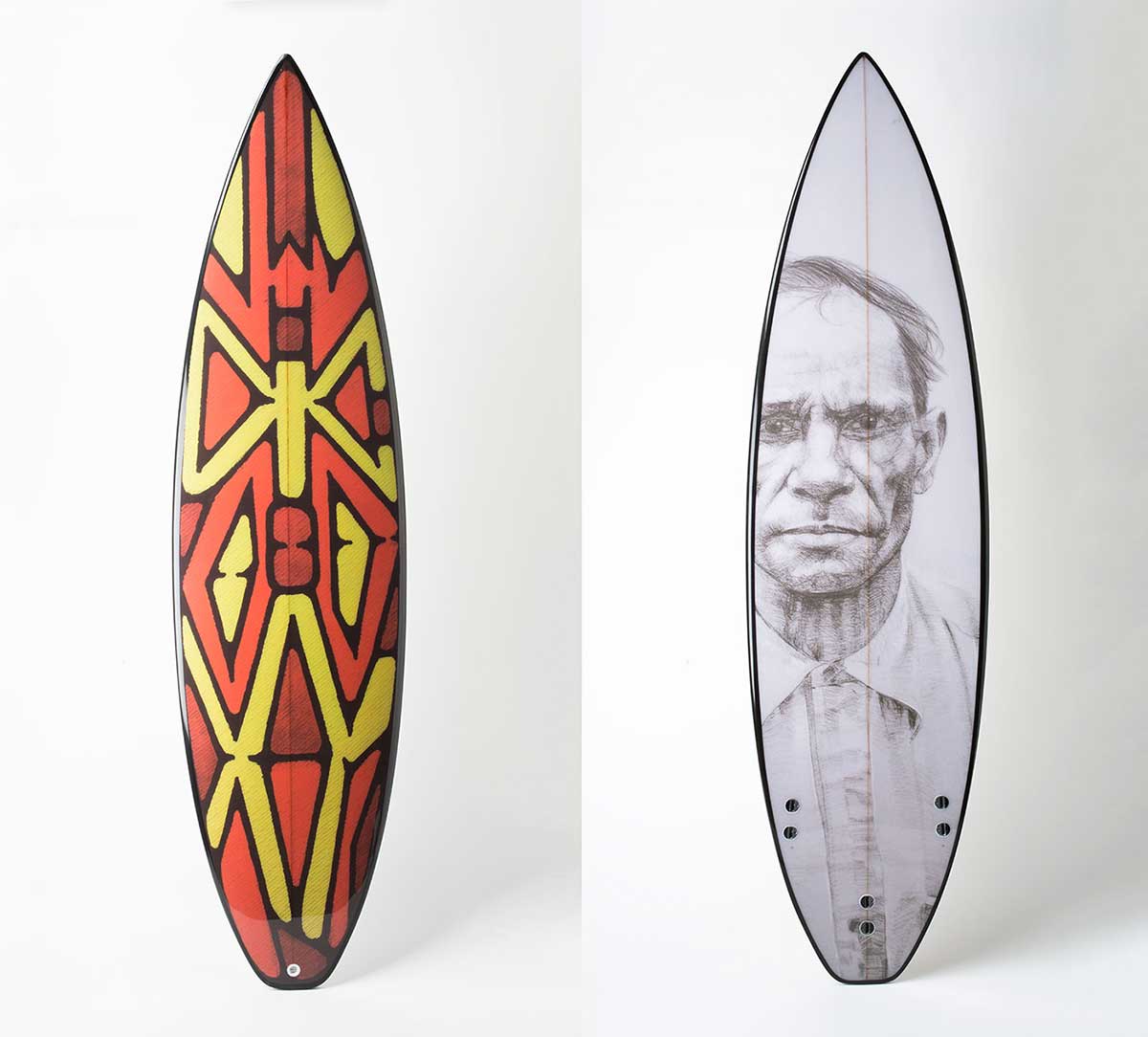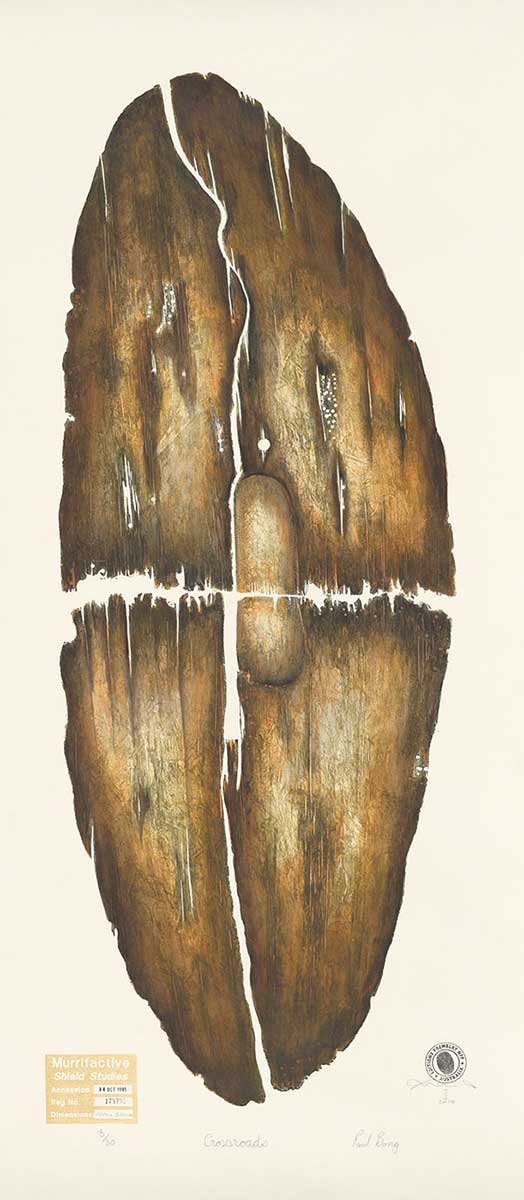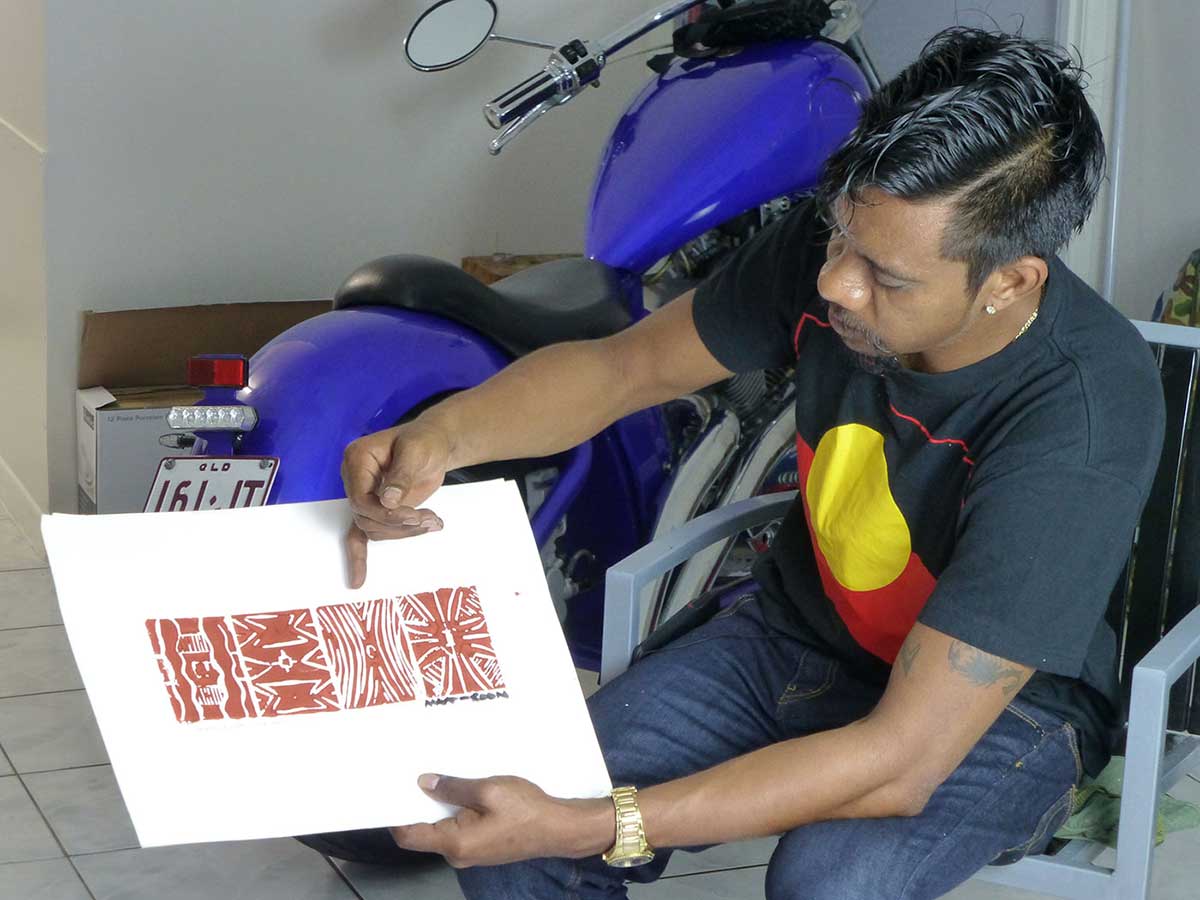This land holds their spirit
Dorita Wilson, Yidinji, 2013:
If a foreigner looks at this ... they’ll think it’s just an ordinary thing: a boomerang, painting, design. But that design tells a big story to the person who held that boomerang in their hand ... how he made it, what he used, and why he put the pattern on there.
In the 1890s in Cairns in far north Queensland, colonial entrepreneurs were acquiring objects from the Yidinji community and producing photographs of Yidinji people to supply collectors, tourists and new colonists wanting souvenirs to send back home.
Henrietta Marrie, Gimuy Walabura Yidinji elder, 2013:
It would have been my people, it would have been my grandfathers and grandmothers ... who were making these necklaces ... the shields and the message sticks.
The shield (below) was among 90 objects collected by a young Englishman, Derwent Vallance, who paid the equivalent of a month’s wages for them. He wrote to his sister, ‘Do display them well as they are a very fine collection’. Objects such as these remain a source of pride among Yidinji people today.
Gudju-gudju (Seith Fourmile), Yidinji traditional owner, 2013:
Having these objects visiting here is the first step in negotiation between the sovereign Aboriginal nations of Australia ... It’s a negotiation between us and the British Government all over again ... for these objects to come back home. This land holds their spirit.
Old objects
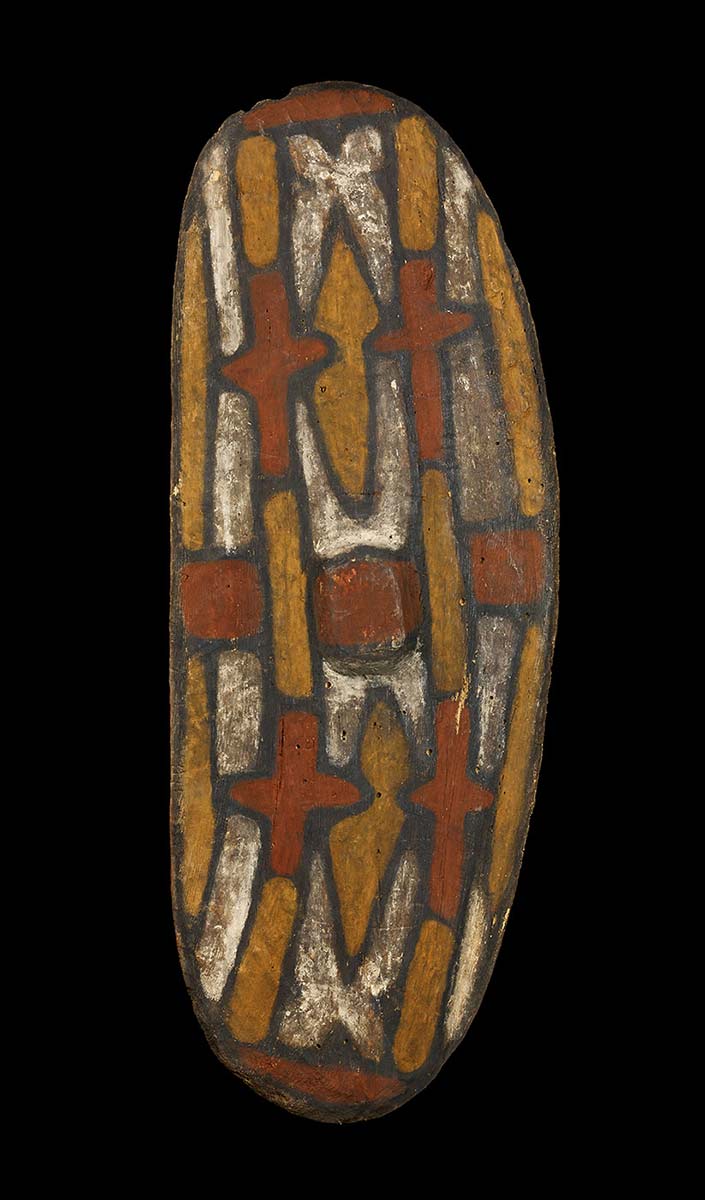
Gudju-gudju (Seith Fourmile), Yidinji traditional owner, 2015:
This shield would have belonged to a wawun [scrub-turkey] man. The colours on the shield are the ochres and clays from country that people still use in ceremony.
The white areas on the design are the djumbun [scorpion] design. The djumbun is a central totem for Yidinji people. [This shield is a fighting
shield].
New objects
Vernon Ah Kee’s artwork bears a striking rainforest shield design. On the back is the face of George Sibley, Ah Kee’s great-grandfather, who was photographed by anthropologist Norman Tindale on Palm Island in 1938. It is one of a series that critiques white Australian beach culture.
Henrietta Marrie, Gimuy Walabura Yidinji elder, 2013:
It would be interesting to get into the mind of those people, those collectors, in terms of why they collected. What kind of feelings did they have to the object? ... What do these objects mean to them as opposed to what do these objects mean to us, the Aboriginal community?
